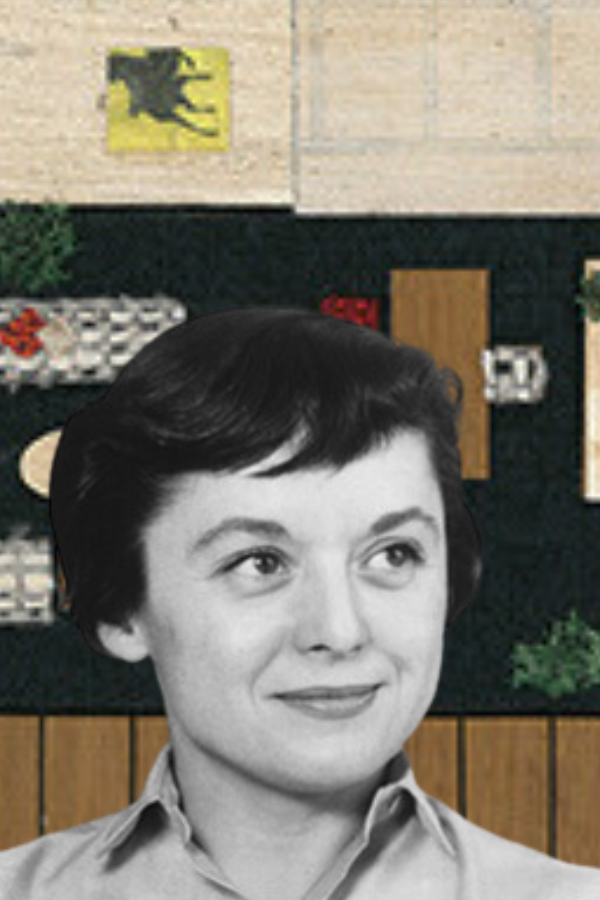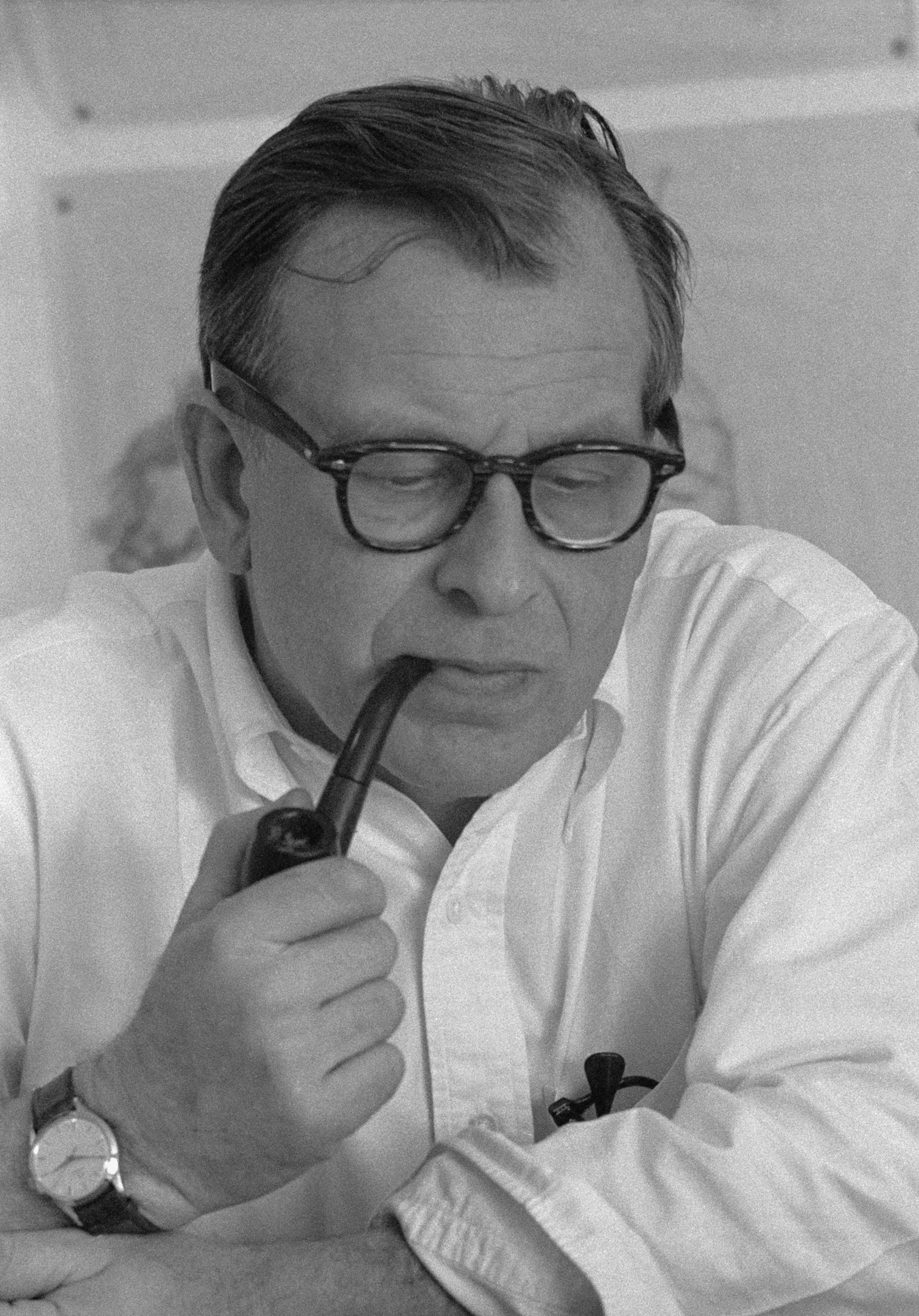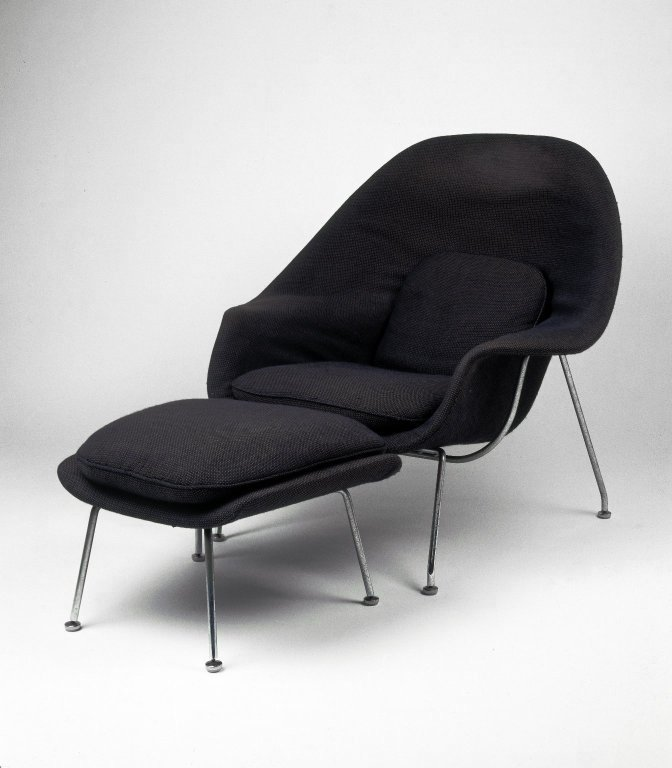
The Fascinating Life of Architect & Designer Florence Knoll
Summary
Reflection Questions
Journal Prompt
Florence Knoll is a name synonymous with innovation and elegance in the world of interior design, architecture, and furniture design. Her journey from a young enthusiast to an influential figure in modern design is a tale worth exploring. In this article, we examine the many facets of Florence Knoll’s life, her remarkable career, and the enduring legacy she has left behind. Read on to learn all about Florence Knoll’s furniture, architecture, and interiors.
All About Furniture and Interior Designer Florence Knoll
Florence Knoll’s early life unfolded amidst adversity, yet her trajectory to becoming an influential figure in design was marked by resilience and a passion for architecture. Born Florence Marguerite Schust in 1917, her family experienced tragedy with the deaths of her brother, father, and mother by the time she was 12. Guided by her interest in architecture, she attended the Kingswood School for Girls, which was situated on the grounds of the Cranbrook Academy of Art. Here, she forged enduring connections with the renowned Saarinen family.
Knoll’s formal education continued at the the Armour Institute (now the Illinois Institute of Technology) in Chicago, later extending to the Architectural Association in London. World War II interrupted her studies, prompting her return to the United States, where she apprenticed under architects Marcel Breuer and Walter Gropius at the behest of Eliel Saarinen. In Chicago, under the tutelage of Ludwig Mies van der Rohe, Knoll earned a bachelor’s degree in 1941, solidifying the foundation for her groundbreaking career in interior design.
Florence Knoll’s Career in Interior Design
Florence Knoll’s career unfolded as a transformative force in the world of interior design. Partnering with Hans Knoll, the owner of Hans G. Knoll Furniture Company, they envisioned introducing modern design to the United States. Initially focusing on importing European designs, wartime constraints led them to seek domestically produced alternatives. In 1943, Florence Knoll joined the company, and after marrying Hans Knoll in 1946, they renamed it Knoll Associates.
A pivotal moment came in 1946 when Florence Knoll established the Knoll Planning Unit (KPU), elevating the company beyond furniture manufacturing to spaces’ holistic design. Leading a team of experts, she pioneered the concept of total design, integrating architecture, interior space planning, and furniture designs. Knoll’s collaborations with iconic designers like Eero Saarinen, Marcel Breuer, and Mies van der Rohe produced timeless pieces, such as Saarinen’s Womb Chair and Mies van der Rohe’s Barcelona Chair.
After Hans Knoll’s untimely death in 1955 – Florence assumed the presidency and continued steering the company to global success. The Knoll Planning Unit, renowned for its innovative approach, completed over 70 office interiors for major companies like IBM and CBS. Knoll’s legacy lies in revolutionizing office spaces, replacing antiquated styles with the iconic “Knoll Look,” characterized by rationalized space plans, modern furniture, and an integration of structure, color, and texture.
In her later life, she continued shaping the design industry, receiving accolades such as the AIA Gold Medal for Industrial Design in 1961.
The Knoll Furniture Collection
Knoll Furniture, founded by Florence Knoll herself, is all about simple, elegant modernism that epitomizes Florence Knoll’s signature style. With clean lines and smart designs, it’s been a go-to for over 80 years. Whether for homes or modern offices, Knoll’s practical yet stylish pieces bring a touch of timeless elegance to any space.
The Knoll Furniture Collection is a testament to Florence Knoll’s visionary approach to contemporary furniture, blending form and function to create enduring design masterpieces. Initially driven by necessity, Knoll designed furniture that was often described as the “meat and potatoes” among flashier pieces. Her pieces were meet specific project needs.
It was targeted for the modern American office workplace. While she modestly claimed not to be a furniture designer, nearly half of the Knoll collection bears her imprint, spanning tables, desks, chairs, lounge chairs, sofas, benches, and stools.
Florence Knoll’s design principles and aesthetics were shaped by her architectural training, resulting in sleek silhouettes and clear geometries. It was also evident in her own house. Contemporary design furniture, wood chips styles, fabric swatches, international styled items representing modernism were there as masterpieces.
Transforming architecture into human-scaled objects, her furniture not only served functional purposes but also delineated interior spaces, harmonizing with overall architectural compositions. The Knoll Furniture Collection reflects a Bauhaus-inspired, timeless design philosophy that complements architectural spaces rather than competing with them.
Iconic Furniture Designs and Collaborations

The enduring legacy of Knoll furniture factory resonates in its pivotal role in modern corporate interiors, shaping the mid-20th-century aesthetic. Collaborations with iconic designers like Ludwig Mies van der Rohe, Eero Saarinen (pictured above), and Harry Bertoia set the standard for modern design, producing iconic furniture suitable for both workplaces and homes.
Today, Knoll’s commitment to timeless, enduring design continues, inspiring a new generation with innovative and dynamic designs for diverse environments, including corporations, healthcare organizations, educational institutions, and governmental agencies. Some of the most iconic furniture pieces from collaborations with Florence Knoll that continue to inspire include the following.
Florence Knoll Sofa
A Florence Knoll design crafted by the architect herself in 1954, this sofa is a classic example of her minimalist and functional design principles. Its clean lines and simple, rectangular shape make it a timeless piece of furniture.
Barcelona Chair
Although the Barcelona Chair was designed by Ludwig Mies van der Rohe and Lilly Reich, Florence Knoll played a key role in bringing this iconic piece to the Knoll collection. The chair’s sleek chrome frame and leather cushions are instantly recognizable.
Saarinen Tulip Table and Chairs
Designed by Eero Saarinen, this collection features a distinctive pedestal base and smooth, organic shapes. The Saarinen Tulip Table and Chairs are known for their elegance and versatility.
Bertoia Diamond Chair
Created by Harry Bertoia, this wireframe chair has become an icon of mid-century modern design. Its airy, sculptural form adds a touch of artistic flair to any space.
Womb Chair

Designed by Eero Saarinen, the Womb Chair is known for its comfortable, enveloping form. It was a departure from the traditional lounge chair designs of its time.
Platner Collection
Warren Platner’s furniture collection, which includes the Platner Dining Table and Platner Lounge Chair, features intricate wire rod bases that create a sense of lightness and movement.
Richard Schultz 1966 Collection
Richard Schultz’s 1966 Collection includes outdoor furniture pieces like dining tables, chairs, and loungers. These pieces are characterized by their durable materials and elegant design, making them suitable for outdoor spaces.
Pollock Executive Chair
Designed by Charles Pollock, this executive chair is known for its comfortable design and distinctive aluminum trim. It became a staple in many office settings.
These iconic furniture pieces, created in collaboration with Florence Knoll and other prominent designers, continue to be celebrated for their timeless design, functionality, and contribution to the modern furniture industry.
The Knoll Planning Unit
The Knoll Planning Unit was established by Florence Knoll in 1943 and was active until 1965. It is a pioneering force in the evolution of office and residential interior design. Initially tasked with crafting Knoll Showrooms to exhibit the firm’s modernist aesthetic, the unit became instrumental in shaping the trajectory of American office spaces during the post-war era.
As the United States experienced a surge in office construction, the Knoll Planning Unit positioned itself at the forefront, offering innovative and comprehensive design solutions for office interiors. Beyond mere decoration, Florence Knoll’s visionary approach involved a meticulous analysis of clients’ work requirements. The unit showcased a commitment to delivering functional spaces tailored to the specific needs of clients.
The breakthrough for the Knoll Planning Unit came with a project for CBS president Frank Stanton, who was impressed by the designs showcased in Knoll Showrooms. This successful venture not only garnered the attention of Stanton’s contacts but also strategically promoted Knoll’s work through influential architecture and design publications. The result was a surge in demand for the unit’s expertise, leading to a remarkable portfolio of over 70 office interiors for major American companies.
Florence Knoll’s architectural background significantly influenced the unit’s approach. Departing from the prevalent office decoration styles of the 1940s, characterized by heavy-carved furniture and haphazard arrangements, Knoll introduced the signature “Knoll Look.” This distinctive style was marked by rationalized space plans, modern furniture with sleek geometries, and a seamless integration of structure, color, and texture.
Transforming the Modern Office
Knoll’s radical transformation of interior space planning encapsulated a “total design” or “Bauhaus approach.” Here, the unit seamlessly integrated interior architecture, furniture, lighting, textiles, and art. This holistic approach not only streamlined the visual appeal of office spaces but also prioritized functionality and efficiency. The unit’s commitment to what Florence Knoll termed “humanized modernism” brought color and texture to interiors, making them more inviting for everyday use.
The Knoll Planning Unit’s achievements were widely acknowledged in architectural circles. Paul Goldberger of The New York Times credited Florence Knoll with doing “more than any other single figure to create the modern, sleek, postwar American office.” Architectural Forum went further, declaring that “the Knoll interior is as much a symbol of modern architecture as Tiffany glass was a symbol of the architecture of Art Nouveau.”
Awards and Recognition
Florence Knoll’s profound impact on the design industry and architectural community is marked by numerous awards and recognitions that underscore her groundbreaking contributions to modernism and interior design. Before her transformative influence, the interior decoration was largely a non-professional pursuit, primarily practiced by hobbyists in domestic settings.
Recognizing the need for professional design in office spaces, Knoll revolutionized interior design by merging decoration with architecture and industrial design. This shift elevated interior design to a professional endeavor, setting a new standard for planning commercial office spaces and reshaping the landscape of modern professional interior design.
Florence Knoll received accolades such as the Museum of Modern Art’s Good Design Award, the the first award from the American Institute of Decorators and the prestigious Industrial Design from the American Institute of Architects Gold Medal on 1961, making her the first woman to achieve this honor. Subsequent awards included the International Design Award from the American Institute of Interior Designers in 1962 and the Total Design Award from the American Society of Interior Designers (1977). She also received the RISD Athena Award for Creativity and Excellence in 1983.
She was inducted in Interior Design Hall of Fame in 1985 and received the honorary doctoral degrees from esteemed institutions like the University of Vermont, the University of Miami, and the University of Minnesota. This further solidified her legacy as a trailblazer in design. In 2002, President George W. Bush presented Florence Knoll with the National Medal of Arts, the nation’s highest honor for artistic excellence. These honors collectively celebrate her enduring influence on the design world and recognize her pivotal role in shaping the modern aesthetic of interior spaces.
Later Life and Legacy
In the later years of her career, Florence Knoll Bassett continued to make significant contributions to design and education. After her husband’s untimely death in 1955, she assumed the presidency of Knoll Associates and played a pivotal role in the company’s leadership. In 1957, while working on a project for the First National Bank of Miami, she met and married the bank’s president, Harry Hood Bassett. Despite selling Knoll Associates in 1959, Florence remained the company’s design director until 1965.
Florence Knoll Bassett’s legacy as a trailblazer in interior design was cemented through her innovative approach, iconic collaborations, and the timeless influence of her designs. She continued to inspire future generations until her passing in 2019 at the age of 101, leaving an unforgettable mark on the world of design.
Final Thoughts on Florence Knoll’s Career
Florence Knoll’s life and contributions to interior design are a captivating journey through innovation and leadership. From her early education to shaping the Knoll brand, she revolutionized the design landscape. Her enduring impact on the industry, evident in the “Knoll Look” and iconic collaborations, cements her legacy. Knoll furniture, Knoll Textiles, Knoll International, New Furniture Factory and Knoll showrooms all showcase the transformative power of her designs.
For design enthusiasts, exploring Knoll’s work is an invitation to witness the evolution of modern design. Her fusion of architecture, furniture, and total design continues to inspire. Let Florence Knoll’s legacy be a beacon for aspiring designers, proof of the transformative power of vision and creativity in shaping the world of interior design.
By Anila Hasnain.
*Images used in the featured image are declared “Fair Use.” Knoll Inc. – Original publication: Knoll Website Immediate source: https://www.knoll.com/designer/Florence-Knoll








